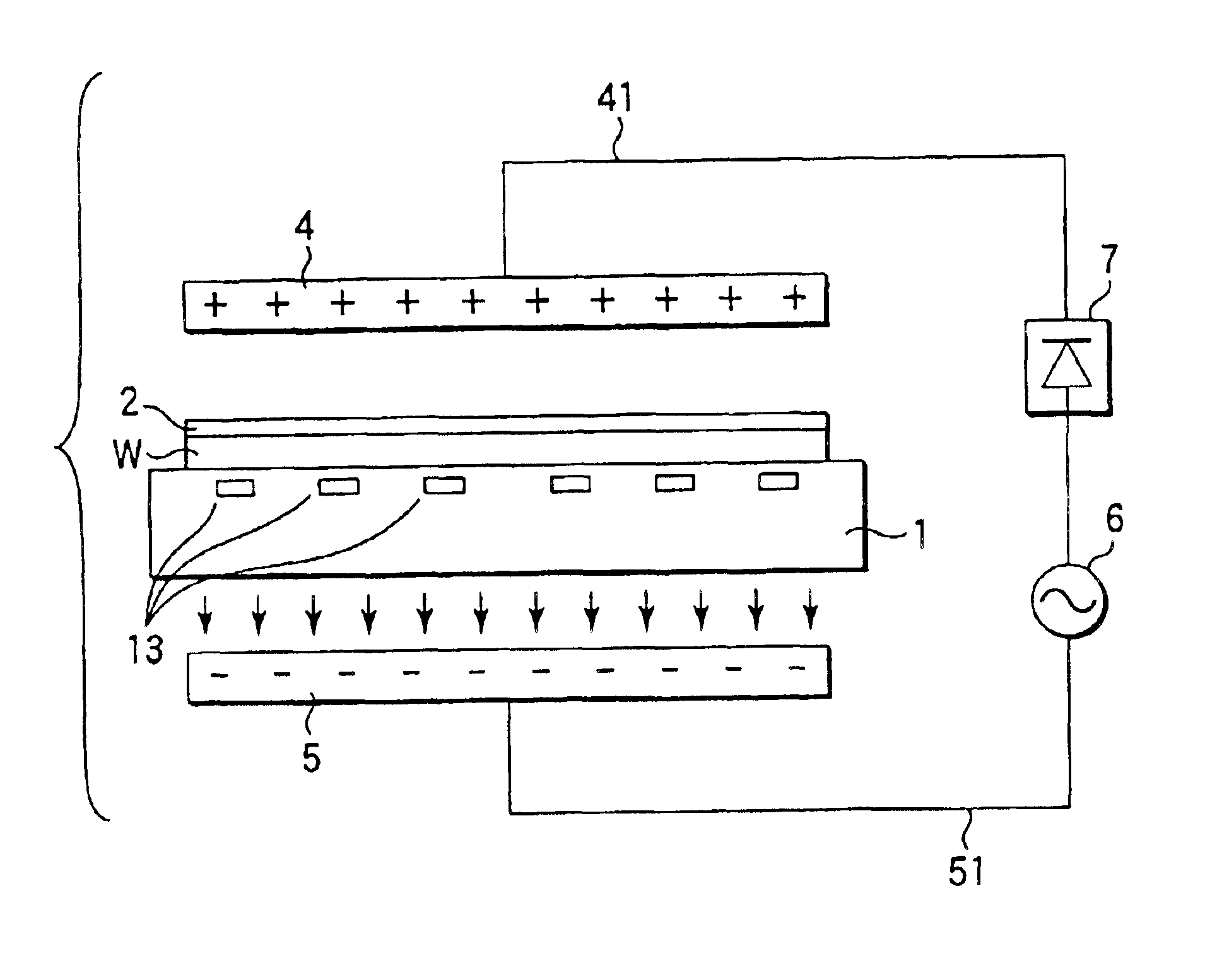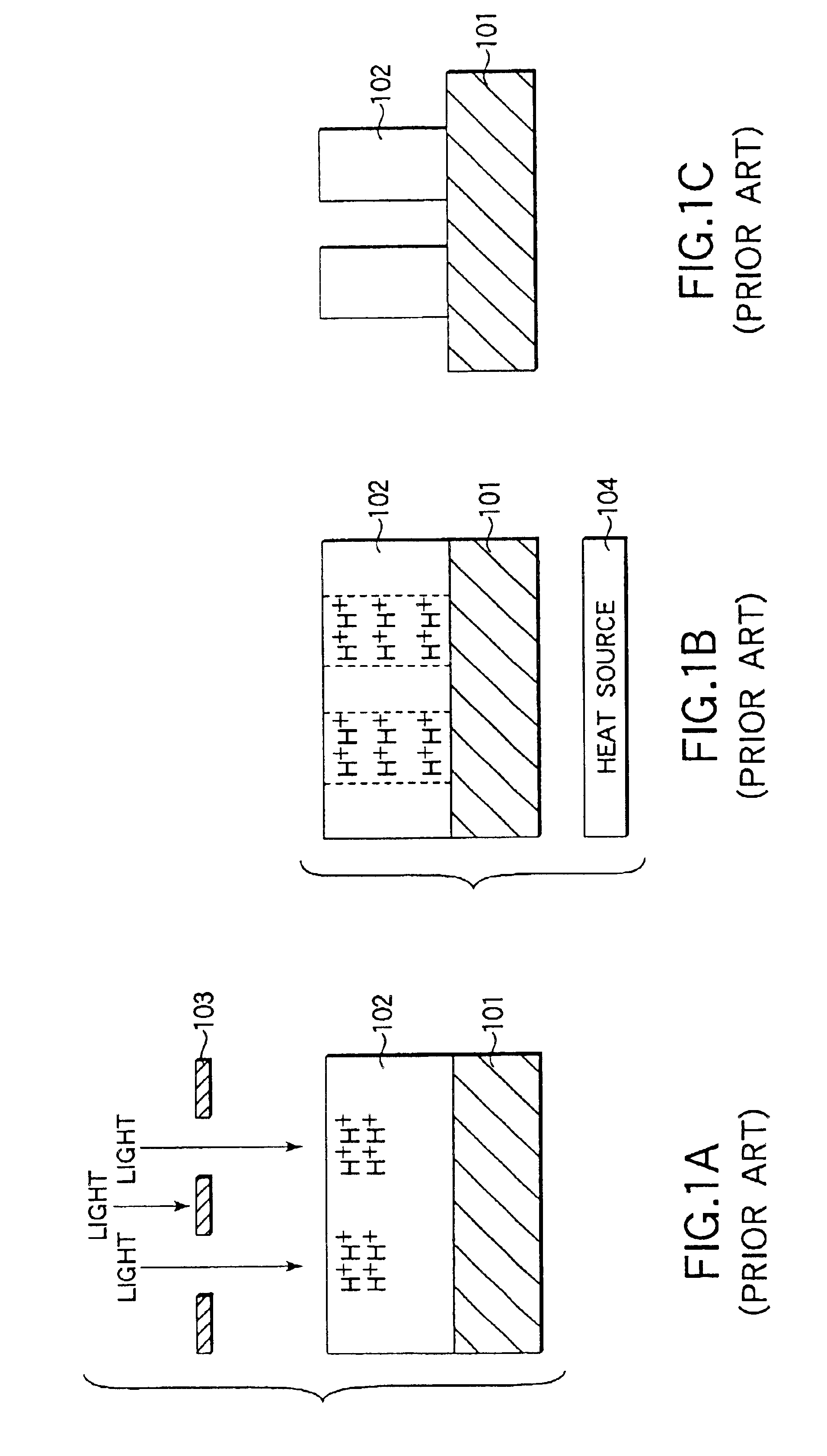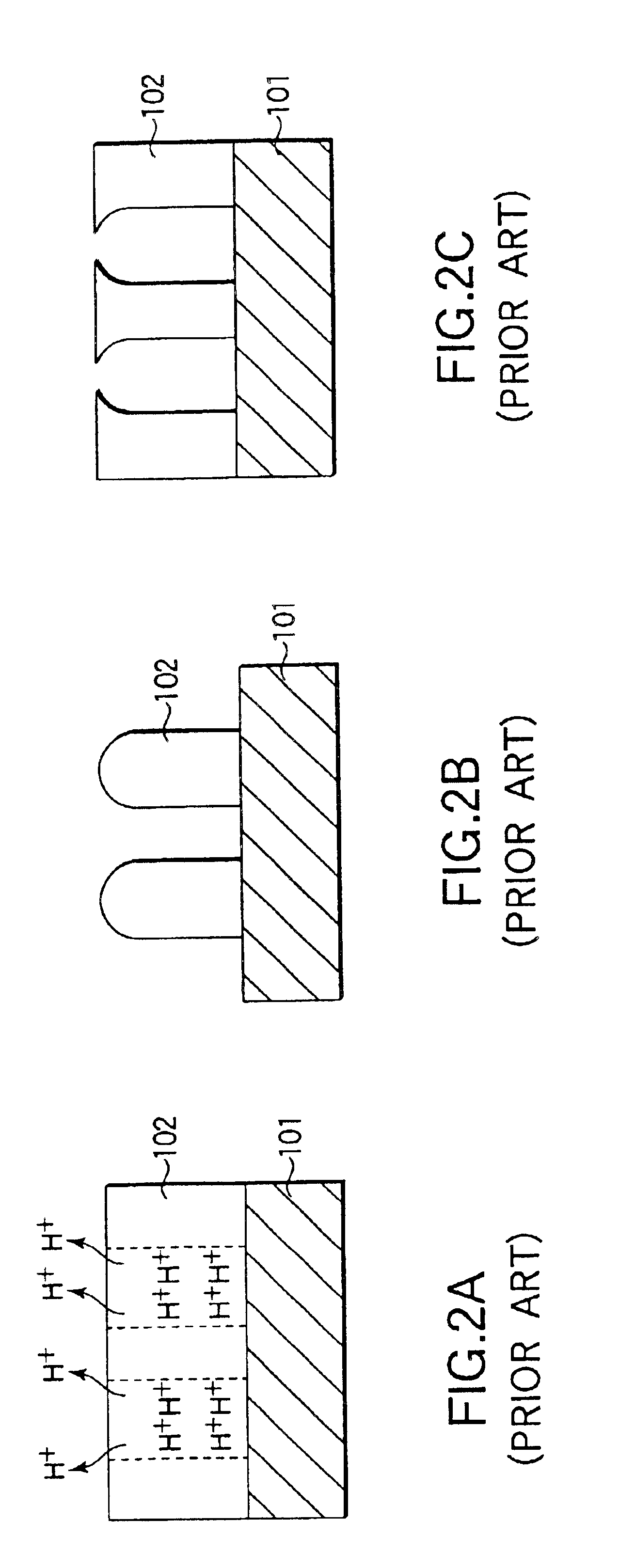Substrate processing apparatus and substrate processing method
a substrate and processing apparatus technology, applied in lighting and heating apparatus, furniture, instruments, etc., can solve the problems of increased running cost, difficult to obtain a high accuracy of line width, and difficulty in uniform coating of anti-reflective film
- Summary
- Abstract
- Description
- Claims
- Application Information
AI Technical Summary
Benefits of technology
Problems solved by technology
Method used
Image
Examples
first embodiment
FIG. 3 is a cross sectional view showing the construction of the substrate processing apparatus according to the present invention. The substrate processing apparatus shown in the drawing is for applying a heat treatment to the substrate coated with a chemical amplification type resist and subjected to a light exposure treatment.
The substrate processing apparatus comprises a substrate table 1 on which is disposed a substrate coated with a chemical amplification type resist 2 and subjected to a light exposure treatment, e.g., a semiconductor wafer W. The substrate table 1 is made of, for example, a ceramic material. A heater 13, e.g., a resistance heat generator, for heating the wafer W disposed on the substrate table 1 from the back side of the wafer W is concentrically buried in the substrate table 1. Projections 17 are formed in that portion of the substrate table 1 which corresponds to the outer circumferential portion of the wafer W so as to permit a small clearance, e.g., a cle...
third embodiment
the present invention will now be described.
In the third embodiment of the present invention, a substrate table 1a made of a conductive material is arranged in place of the substrate table 1 shown in FIG. 3, and the negative side of the DC power supply 52 is connected directly to the substrate table 1a so as to allow the substrate table 1a to perform the function of the electrode, as shown in FIG. 8. In this case, the distance between the substrate table 1a acting as the electrode and the wafer W is set at, for example, 0.1 mm and voltage of scores of kV is applied between the substrate table 1a and the wafer W. Incidentally, it is necessary in this case to insulate the heater 13 and the substrate table 1a by suitable means so as to prevent the electrical interference with the heater 13.
fourth embodiment
the present invention will now be described with reference to FIGS. 9 and 10.
In the fourth embodiment of the present invention, an electrode is arranged on each of the front surface side and the back surface side of the wafer W. FIG. 9 is directed to the combination of the construction in the first embodiment of the present invention, in which the electrode 4 is arranged on the front surface side of the wafer W, and the construction in the second embodiment of the present invention, in which the electrode 5 is arranged on the back surface side of the wafer W. In this case, a repulsive force is exerted on the protons (H+) in the surface portion of the resist 2 from above and an attractive force is exerted on the protons (H+) from below so as to make it possible to suppress more effectively the scattering of the acid of protons (H+) from the surface portion of the resist 2.
In the example shown in FIG. 10, the electrodes 4 and 5 are arranged on the front surface side and the back surfa...
PUM
| Property | Measurement | Unit |
|---|---|---|
| temperature | aaaaa | aaaaa |
| distance | aaaaa | aaaaa |
| distance | aaaaa | aaaaa |
Abstract
Description
Claims
Application Information
 Login to View More
Login to View More - R&D
- Intellectual Property
- Life Sciences
- Materials
- Tech Scout
- Unparalleled Data Quality
- Higher Quality Content
- 60% Fewer Hallucinations
Browse by: Latest US Patents, China's latest patents, Technical Efficacy Thesaurus, Application Domain, Technology Topic, Popular Technical Reports.
© 2025 PatSnap. All rights reserved.Legal|Privacy policy|Modern Slavery Act Transparency Statement|Sitemap|About US| Contact US: help@patsnap.com



